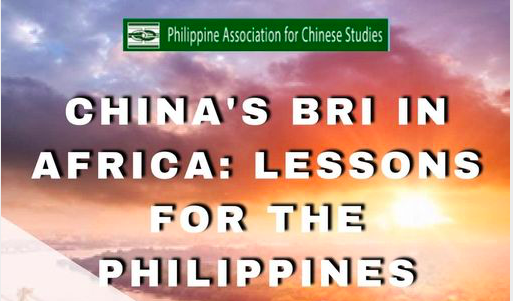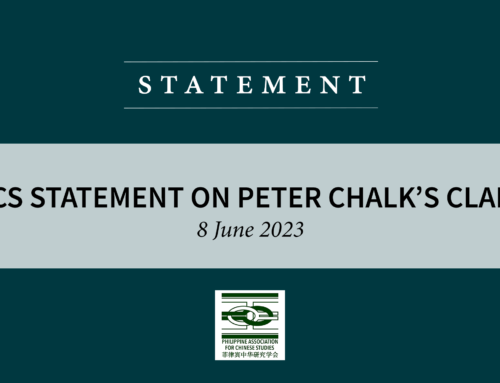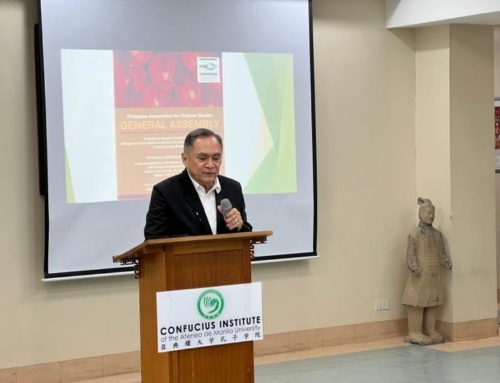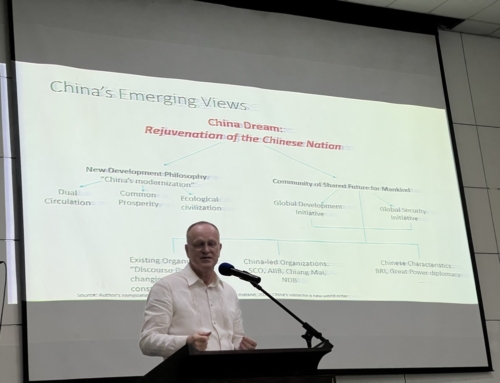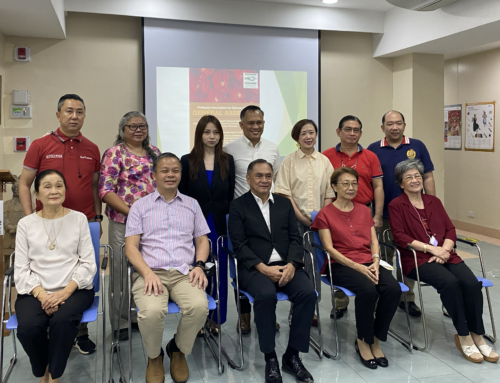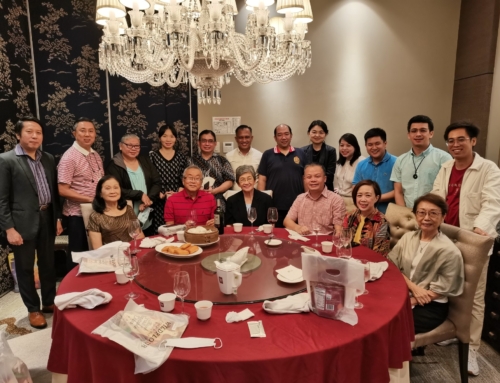by Dave’s Almocera and Micha Dianne Reoyan
3 May 2021 – In 2013, Chinese President Xi Jinping announced a new initiative to improve regional integration, increase trade, and stimulate economic growth. This foreign policy became known as the ‘Belt and Road’ initiative (BRI). The BRI continues to advance in many states around the world, contributing significantly to the prosperity and development of the participating countries through infrastructure development. To better understand the nuances and mechanisms of BRI, the Philippine Association of Chinese Studies hosted a webinar on “China’s BRI in Africa: a lesson for the Philippines” on April 24, 2021. The webinar presented the impact of BRI projects in Africa and the Philippines, and China’s foreign trade and investments.
Ms. Alessandra Lopez presented her research on “China’s BRI in Africa: Best Practices for the Philippines.” She spoke about BRI-funded initiatives in Africa that are comparable to those in the Philippines. First, there is the Lagos-Ibadan Standard Gauge Railway in Nigeria. Unfortunately, due to Nigeria’s lack of infrastructure linking existing industrial bases and rail lines, this project did not have a beneficial outcome. Furthermore, the rail expansion, which is intended to connect Nigeria to the global market, has failed to address critical port congestion. This casts doubt on the potential developmental and positive economic growth that is supposed to be generated. On the other hand, the Addis-Ababa-Djibouti Standard Gauge Railway in Ethiopia shows a positive result. It reduces travel time from three days to twelve hours, generates freight deliveries along with the rail line, increases transport capacity, and establishes Adama Industrial Park. Adama Industrial now Park houses Chinese manufacturing plants and projects to create 25 thousand jobs for locals.
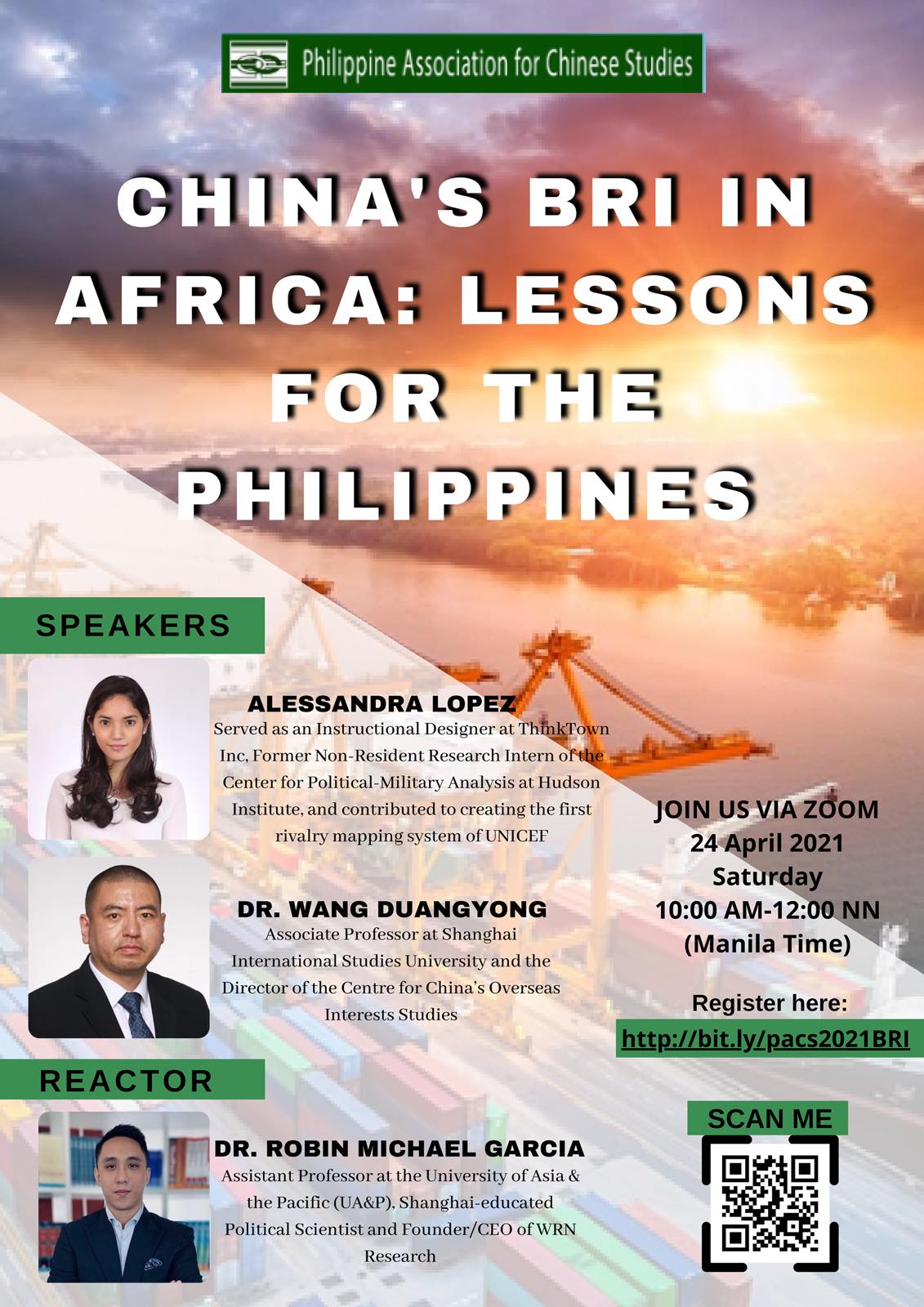 For the Philippines, it has secured the highest level of government approval for the Subic Clark Railway project, a government-funded project worth $940 million USD. According to the Chinese Embassy, the completed Subic Clark Railway will connect ports, railways, and airports. It will boost freight service demand and economic activity by increasing logistical efficiency and lowering transportation costs. Moreover, the railway will be connected to New Clark City, which will reduce congestion and strengthen intermodal transportation.
For the Philippines, it has secured the highest level of government approval for the Subic Clark Railway project, a government-funded project worth $940 million USD. According to the Chinese Embassy, the completed Subic Clark Railway will connect ports, railways, and airports. It will boost freight service demand and economic activity by increasing logistical efficiency and lowering transportation costs. Moreover, the railway will be connected to New Clark City, which will reduce congestion and strengthen intermodal transportation.
Ms. Lopez concluded that BRI financing provides an optimistic window but does not ensure project success. The Subic-Clark railways require the local government’s strong implementation as well as the absorptive capacity of the contractors. Furthermore, she suggested that, in terms of economic development and diversification, first, the Philippines should seek potential development for existing manufacturers and attract new investment along the rail line. Second, the upstream effects on the Subic Port to Clark Airport must be considered, as losses due to traffic delays would stymie upstream economic diversification.
The second speaker was Professor Wang Duanyong of Shanghai International Studies University. Prof Wang presented his case studies on BRI in Africa, and argued that while China is important to Africa, Africa is not as significant to China. Based on the Foreign Economic Trade Geographical Distribution, Africa ranked fifth out of the six in China’s regional investments. Africa also only accounts for a total of 4.4 percent in China’s exports and 3.5 percent in China’s imports. In comparison, Asia (ASEAN, Korea, and Japan) ranked first with 47. 5 percent of China’s exports and 56.3 percent of China’s imports.
Despite China’s minimal trade investment in Africa, China has emerged as the continent’s most prominent infrastructure contractor. Africa contracted thousands of Chinese personnel for engineering projects. South Africa was the first African country to sign an MOU with China’s BRI in 2015, and other African countries soon followed. The need for an infrastructure fund and industrialization are critical points for Africa’s development, which BRI can fill. Professor Wang presented the following following African projects as examples:
First, the Minerals for Infrastructure Agreement between China and the Democratic Republic of the Congo, a joint venture mining exploration. China will receive 10.6 million metric tons of copper and 625 thousand metric tons of cobalt in exchange for the reconstruction and construction of railways, roads, bridges, airports, and universities in Congo. However, some challenges arose, such as the project’s reform of state-owned enterprises, an issue with electrical power, and a financing structure. The issues are currently being addressed, and the project is still expected to be a success. Another African project is Egypt’s New Administrative Capital, which requires at least 45 billion USD. In 2016, the Egyptian government and CFLD signed a Memorandum of Understanding. However, nothing has progressed since then.
The obstacles to furthering the BRI in Africa, specifically in the aforementioned projects, are based on economic nationalism. African states are concerned about loans and potential debt trap from Chinese banks finance projects. Besides, there are also local contractors that may also provide services at lower prices. There are also issues with administrative efficiency and interventions from lobbying groups. On the other hand, the Chinese firms are beset by financial risk and debt crisis.
Professor Wang concluded by saying that the Philippines should keep in mind that China is ASEAN’s most important trading partner. Hence, the Philippines should reconsider the trade relations with China, the contractors for infrastructure, and the amount necessary for development investment in order to benefit from BRI initiatives.
Dr. Robin Michael U. Garcia, an Assistant professor at the University of Asia and Pacific (UA&P) and a Shanghai-educated political scientist, acknowledges that with the massive Chinese financing to the Belt and Road countries, Africa is an important illustration of the success of this initiative. Quantitatively assessing the cases of Ethiopia and Nigeria provides a solid footing for the Philippines to appraise and assess how the country’s economic structure will fare with the BRI investments.
Dr. Garcia affirms that the empirical analyses provided by Ms. Lopez and Professor Wang quantified the economic impact of the Belt and Road Initiative on recipients and investors. However, from the standpoint of political psychology, Dr. Garcia emphasized that in order for the Philippines to maneuver and seize the opportunities presented by the BRI, it must consider the complexities of domestic politics. Dr. Garcia proposes the lens of reassurance to understand a country’s receptivity to BRI given its congruence to shape its economic stature. This lens posits that any reassurance attempt by a proponent is relational to both its capabilities and the acceptance of the recipient. As a result, the acceptance of BRI, as well as China’s credibility to communicate its benign intentions, are subject to a variety of domestic considerations. This includes the economic environment, popular sentiment, political alliances, and even China’s official public diplomacy to its recipient countries.
This PACS webinar was held through Zoom and attended by 77 participants from different academic and business organizations.
Missed the webinar? Watch it here: https://www.facebook.com/PacsOrg/videos/250826380103082
